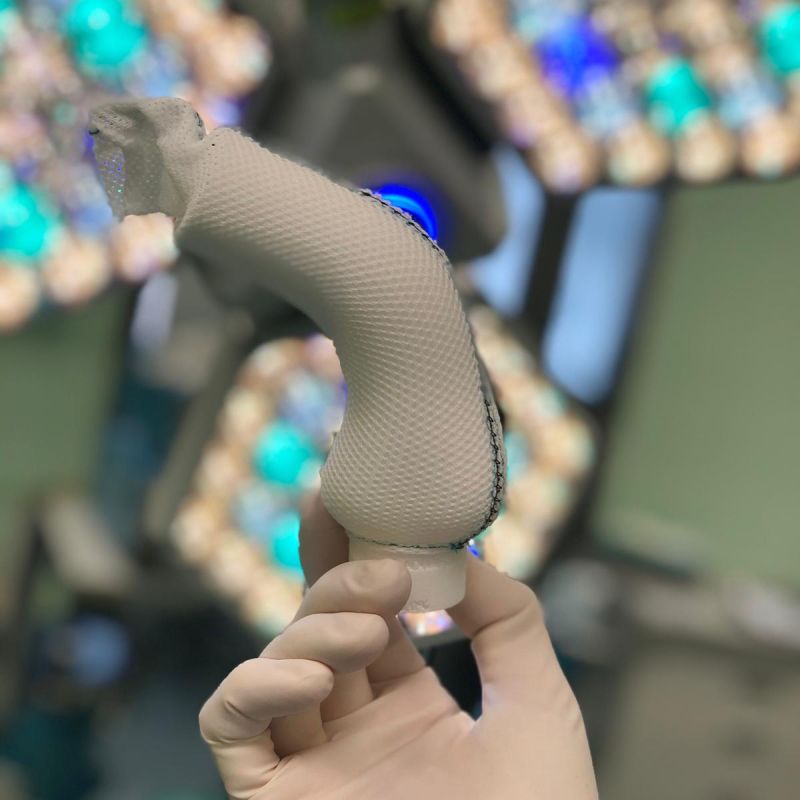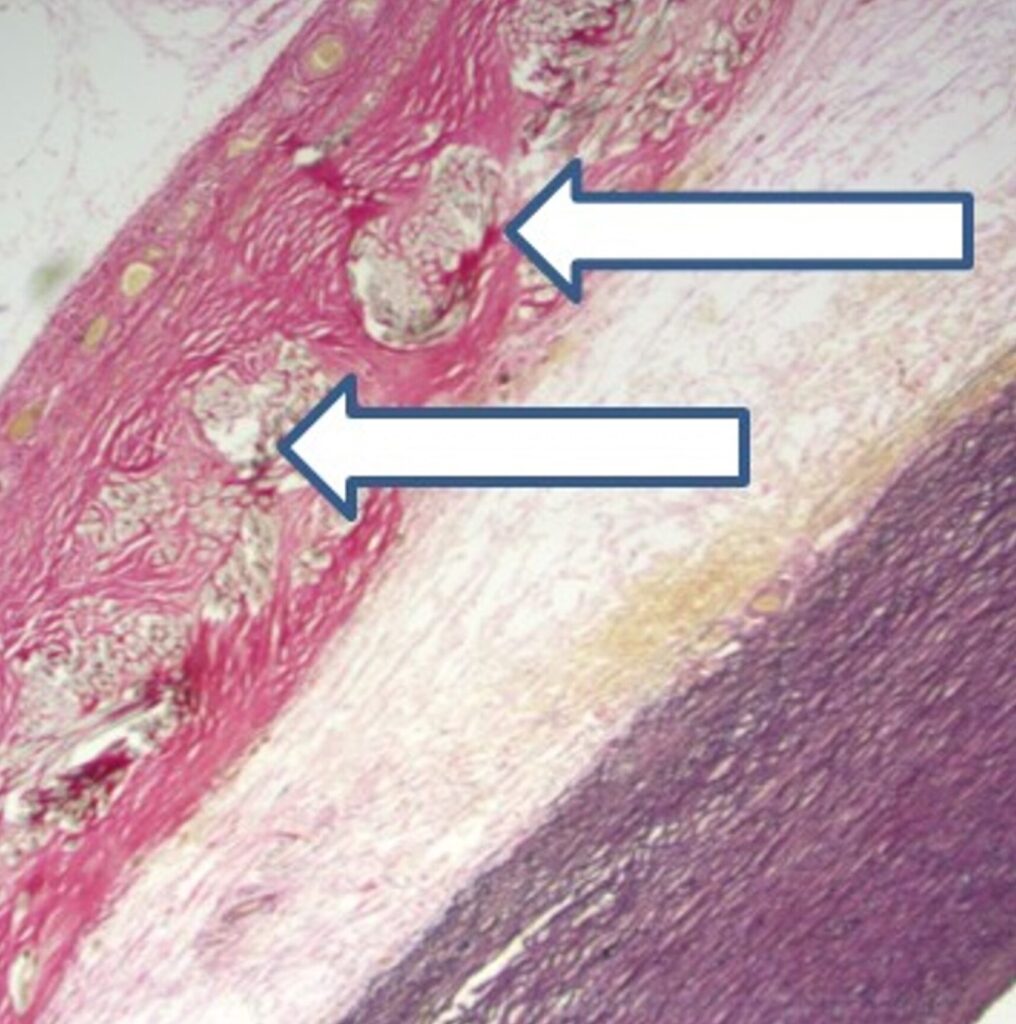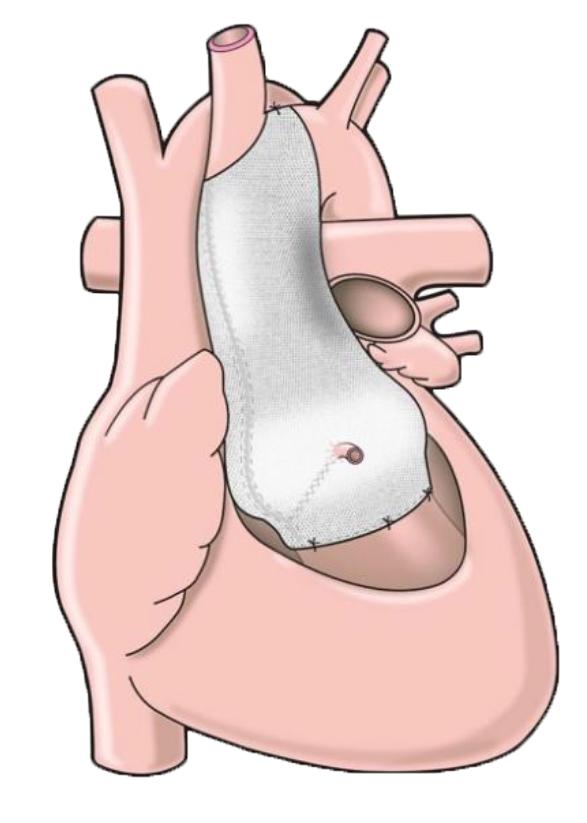The procedure to fit the ExoVasc® PEARS takes two to three hours and involves open chest surgery. Cardiopulmonary bypass using a heart lung machine is not usually necessary because the procedure is carried out on the beating heart. The aorta and valve remain intact and there is no cutting of any major vessel.
In preparation for the procedure, the patient has a CT scan. The data from the scan is used to create a 3D-printed polymeric former that exactly matches the patient’s individual aorta. This former shapes the ExoVasc® PEARS implant, which is made from polyethylene terephthalate, a soft and pliable biocompatible textile.
When implanted, the ExoVasc® PEARS is removed from its former and placed around the ascending aorta and aortic root. It is sutured (stitched) into place, accommodating the coronary arteries, without interrupting the circulation or cutting into the aorta.

After implantation
Following implantation, the ExoVasc® PEARS prevents further dilation and becomes incorporated into the aortic wall. (The arrows in the image indicate the location of the ExoVasc® PEARS four years after surgery to implant the device.)
Further surgery to manage the condition is unlikely to be necessary.
However, the ExoVasc® PEARS does not preclude further aortic intervention if it is needed in the future.
It is also a safer option than root replacement for those who wish to become pregnant (see Allen C, Pepper J. External aortic support for people with Marfan’s syndrome. BMJ. 2010;340:c1692).

Patient benefits brochure
You may find our patient benefits brochure useful when discussing the ExoVasc® PEARS with your doctor.
Surgical centres
The Aortic PEARS procedure is offered in a number of centres in the UK, Europe and the rest of the world.




